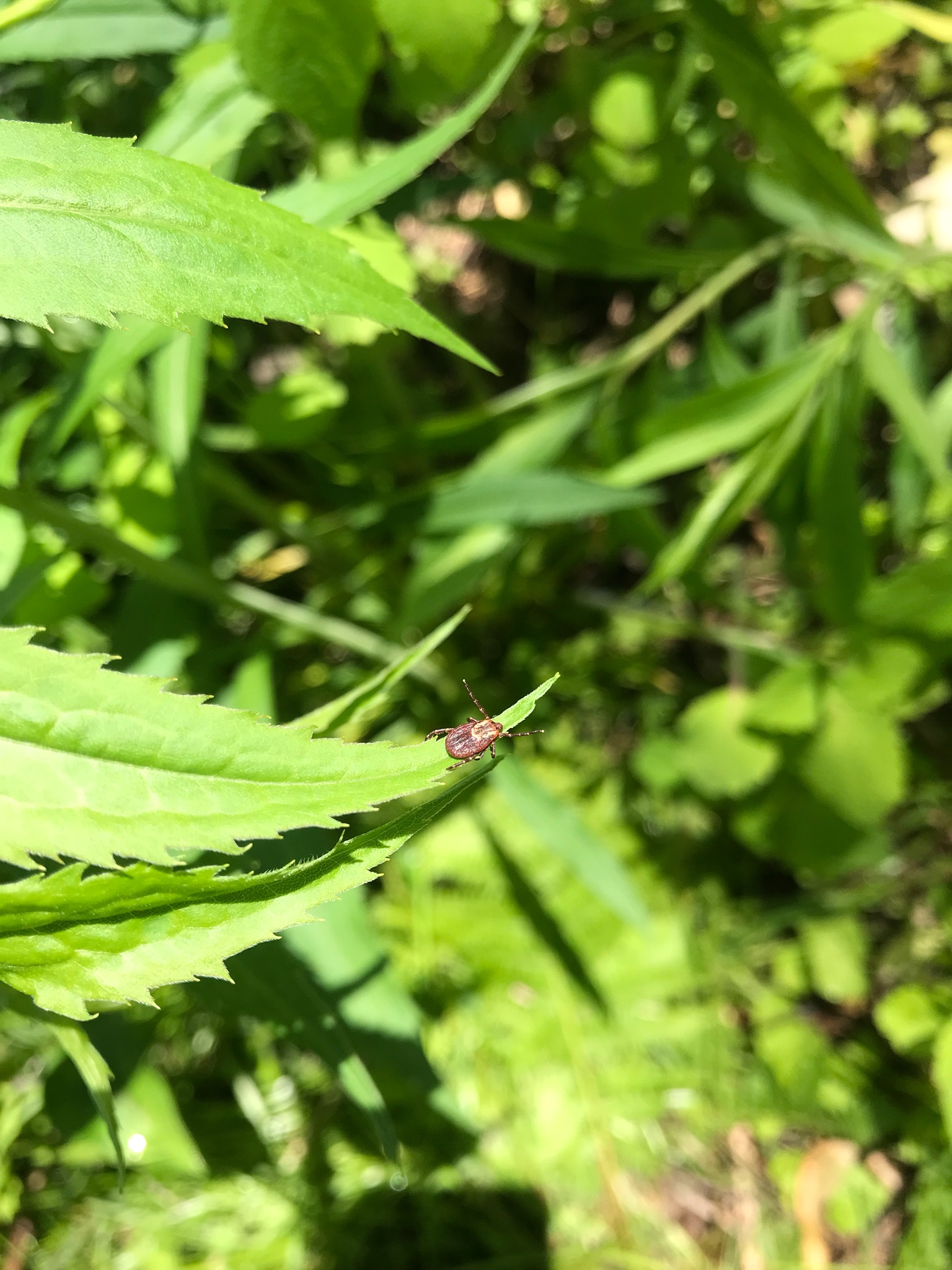In 2009, two Missouri farmers were exhibiting symptoms of low white blood cell (leukopenia) and low blood platelet counts (thrombocytopenia) after several recent tick exposures. They were given a course of Doxycycline, however, they were not responsive to treatment. They were identified by the CDC with what we now know as Heartland Virus. Since then, there have been approximately ~40 confirmed human cases. The cases are usually allocated to southern states including Arkansas, Georgia, Illinois, Indiana, Iowa, Kansa, Kentucky, Missouri, North Carolina, Oklahoma, and Tennessee. The distribution of these cases towards southern states may be due to the main vector that carries the virus, Amblyomma americanum or the lone star tick.
Lone Star Tick
The Lone Star tick is found predominantly in the Southeast and Northeast parts of the United States, however, their distribution has been rapidly expanding due to climate change and land usage patterns. Lone Star ticks are considered an extremely aggressive tick species. They actively seek out hosts via carbon dioxide emission and vibrations. To complete their life-cycle, all ticks must take three full blood meals. The three stages of a tick include larvae, nymph, and adult, a blood meal is required to molt into each new stage. Generally, the later the stage, the greater the possibility of pathogen exposure. However, when it comes to Lone Star ticks, there is some evidence of transovarial transmission of pathogens from the mother to the offspring. So even some larvae may already be exposed to transmissible pathogens even before their first blood meals. It is important to recognize that all stages of the Lone Star ticks can be a possible threat.
Lone Star ticks are also linked to Rocky Mountain Spotted Fever, southern tick-associated rash illness (STARI), and alpha-gal syndrome (red meat allergy).
Heartland Virus
Heartland virus (HRTV) is a novel RNA Bunyaviridae Phlebovirus. The virus has been found to be genetically similar and closely related to thrombocytopenia syndrome virus (SFTSV) which is also a tick-borne phlebovirus endemic to Korea, Japan, and China. Since HRTV is a new/emerging virus, replicating it within a laboratory setting has been problematic because no mammalian host that was used was able to undergo the full stages of the virus, such as viremia. Understanding the full mechanism behind the virus is still underway.
Symptoms/On-Set
The incubation period of Heartland virus ranges from two days to two weeks from the initial tick bite.
Commonly experienced symptoms include:
- Fever
- Fatigue
- Headaches
- Muscle aches
- Nausea
- Diarrhea
- Loss of appetite
- Bruising easily
Diagnosis And Treatment
Diagnosing Heartland virus can be difficult. Most physicians should use the following guidelines when diagnosing the illness.
An acute febrile illness (acute fever) within the last three months. Along with one of the following criteria from each group:
Epidemiologic Criteria:
- A known tick bite, finding a tick on your body, or potential exposure to ticks through outdoor activities in the 3 weeks prior to symptom onset during spring through fall OR
- Resides in or recently traveled to an area with previous evidence of Heartland virus.
Clinical Criteria:
- Leukopenia (white blood cells <4,500 cells/µL) or thrombocytopenia (platelets <150,000
cells/mL) not explained by another condition; OR - Suspected tick-borne disease with no response to the appropriate treatment given, such as a course of doxycycline.
Currently, no set treatment is available for Heartland virus. Most people would be treated with supportive therapy such as IV fluids, fever reducers, and pain medications. Antibiotics are NOT effective against viruses.
References:

